Communication
5 Innovative Ways to Use Chat Tools for Marketing

Marketers are always looking out for the “next big thing” and it turns out one has been right under our noses all along: chat tools. These platforms have become the latest frontier for marketers, opening up creative new ways to engage customers and streamline workflows.
In 2025, these tools have evolved far beyond basic team messaging. They now serve as intelligent, AI-powered engines that drive marketing engagement, customer service, lead generation, and even product recommendations — all in real time.
It’s commonplace for teams to use chat tools to increase their productivity and improve their collaboration efforts. But in recent years, more business messengers have entered the market, bringing AI-powered features into the mix. What was once a chat tools for team collaboration is now a powerful channel for data-driven marketing strategies.
Today, AI bots are transforming the way marketers interact with leads and customers. From Facebook Messenger to WhatsApp, chatbots, and ai call centers are popping up in every corner of the digital world, offering everything from instant product recommendations to seamless customer support. Chat platforms have become an integral part of modern marketing, enabling real-time communication and automating key tasks.
In fact, a 2025 Gartner report shows that over 80% of customer interactions are now handled by AI tools, including intelligent chatbots and virtual assistants — not just for support, but for lead qualification, upselling, and onboarding.
According to Inc. magazine, 51% of customers expect business to be available 24/7, and chat tools offer a cost-effective method to meet that demand. Not only do they offer 24/7 support, but they do it in a way that customers prefer the most — 92% of customers report satisfaction after a live chat session. This is higher than phone calls, Twitter or email, according to Zendesk.
But in 2025, marketing teams are using these tools for much more than just customer service. With new capabilities like predictive analytics and behavioral triggers, chat platforms now help improve lead generation, increase engagement, and even automate retargeting — all in real time.
From seamless collaboration to creative customer engagement, chat tools aren’t just for internal communication anymore. They’ve evolved into powerful marketing channels. In this article, we’ll walk you through 5 innovative ways to use chat tools for marketing alongside a list of must-have tools for small businesses.
Seamless collaboration
Marketers today increasingly rely on visual communication, and chat tools offer the perfect blend of functionality to support this. If you’re building an ad with a remote design team, you can pop in some links to some inspiration, or attach a screenshot of a particular shade of purple that works well with your logo.
This is especially helpful for logo design and ensuring everyone is aligned on the vision and key design principles.
Tools like Chanty, Slack, and Microsoft Teams make it easy to share links, images, and inspiration. Their visual-sharing features are essential for maintaining consistency in brand assets and aligning the entire team with the overall vision.
But it’s not just about the visuals! Chat tools have also been a real game-changer when it comes to improving cross-department collaboration, especially between marketing and sales teams. In fact, Hubspot discovered that there’s a $1 trillion price tag to organizations every year due to misalignment between sales and marketing teams.
Just let that sink in for a second!
What’s the problem? It turns out, it’s a lack of communication. When marketing teams constantly funnel leads towards sales teams – and sales teams don’t have the tools or knowledge to close the sale—the business is the real loser. The other side of this news is that aligning your teams can be tough, but it’s definitely worth the effort.
Adding a chat tool to your workflow allows marketing teams to quickly pass warm leads to sales teams where the lead can be nurtured and hopefully converted. Platforms like Chanty were born out of a clear need for better collaboration. Its developers, who previously ran a digital agency, knew they needed a tool to keep teams on the same page.
And the benefits of aligning sales and marketing are huge. According to HubSpot, calibrating sales and marketing teams can result in 38% more closed deals and 208% higher marketing revenue. Effective two-way communication helps sales, design, marketing teams, and others stay on message.
Use link tracking and chat to convert warm leads
One of the most effective ways for marketers to get on the chat bandwagon is by using a link tracking tool and chat together to actively convert warm leads.
Did you know you can personalize chat invites based on people’s clicks to get to your website? This warm-n-fuzzy method of opening the conversation attracts people’s attention and is much more effective than a generic greeting. Personalization gives your chat associate a jump start on what the customer may need to convert.
So if people came to your site via an ad for shoes, you can offer information on sizes. A personalized experience lets customers know that you care and optimizes their website experience.
Companies are turning interested prospects into paying customers faster than ever before by responding at the right moment, especially through AI-powered chatbots. This blend of link tracking and chat is the most effective way to improve engagement and nurture leads in a targeted and efficient way, significantly boosting ROI.
The role of automation in marketing
Automation through chat tools has truly transformed the marketing game, allowing businesses to save time and focus on what matters most. By automating routine interactions—like answering FAQs, following up with leads, or reminding customers of special offers—companies can stay connected with prospects 24/7 without missing a beat.
According to McKinsey’s latest automation survey, automated chat responses can reduce customer wait times by up to 88%, and businesses adopting AI chat see a 23% boost in customer satisfaction scores. In today’s marketing funnels, bots now handle everything from quiz-style product suggestions to proactive cart abandonment recovery.
Think about it: chatbots can instantly respond to routine questions, guide customers through the early stages of your sales funnel, or recommend products based on browsing behavior. That means your marketing team can stay focused on strategy while automation takes care of the repetitive tasks. And the beauty of it? It’s consistent. No missed messages, no human errors—just real-time, reliable support.
But automation doesn’t stop at customer service. Smart segmentation allows you to send personalized, targeted messages that resonate. If a chatbot detects someone browsing a particular product, it can instantly respond with a tailored message—maybe more details, a comparison, or even a discount. This level of personalization is a game-changer for driving conversions.
And let’s not forget email marketing. With automation, you can trigger emails based on user behaviors like signing up for a newsletter, downloading a resource, or abandoning a cart. It keeps your audience engaged with timely, relevant content—guiding them through the funnel without constant manual input.
Creative engagement
Sometimes, people worry that technology is becoming too invasive. But it all depends on the perception of the customer. A recent campaign by Hellmann’s mayonnaise made use of the popular messaging platform, WhatsApp. Over 1 billion people in 180 countries use this workplace chat, making it the ideal way to reach customers regardless of their physical location.
Hellmann’s asked customers in Brazil to send a picture of the contents of their fridge through the platform. Their chefs then sent back suggestions on what they could make with the ingredients. Intrusive? Apparently not, customers who used the ‘WhatsCook’ service didn’t think so and 13,000 customers reported a stellar 99.5 percent approval rating for the service. Since then, it was rolled out to Argentina, Chile, Uruguay and Paraguay.
So what’s the difference between being engaging and intrusive? Engagement happens when you provide value to your customers, rather than choosing to benefit just your brand.
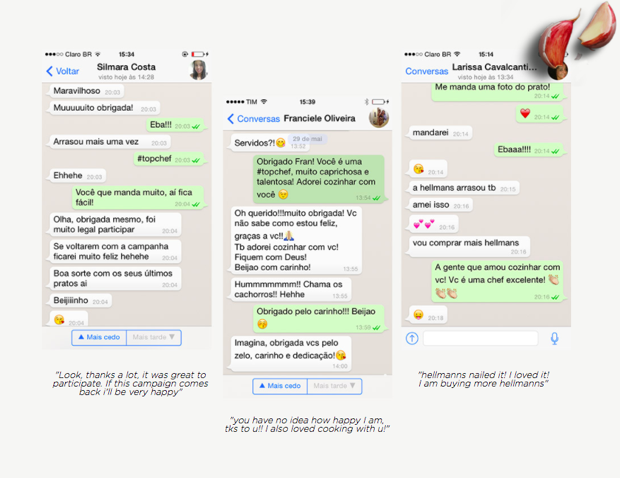
Marketing with Facebook Messenger
Facebook Messenger has 900 million active users every month and Facebook chatbots have been gaining attention over the last few years due to their continued ability to expand into micro-targeted audiences.
Forward-thinking brands have been using it to communicate with customers on Facebook and offer a personalized experience. Far from the pathetic non-human chatbots you’ve seen in movies, today’s chatbots can be warm, personable and quite close to sounding human. These conversational agents utilize natural language processing to parse text from users and determine how to respond.
Leading brands like Disney have used it to create an immersive experience. Their Zootopia chatbot engaged younger audiences by allowing them to solve crimes with their favorite fictional characters.
Similarly, just this month, cable and satellite channel WGN America created a detective story chatbot to promote the premiere of its new series “Bellevue.”

While some are predicting the end of chatbots, Facebook anticipates that more brands will get on board. Head of the Messenger at Facebook, David Marcus, wrote a blog post earlier this month saying that messaging as a marketing channel is no longer a case of if but when. “People expect to find businesses with some sort of messaging experience,” he said.
Grab leads or redirect wanderers
No one likes a dead end, and most 404 pages might as well include a massive sign stating “Your search ends here.” Fortunately, this is another great time to trigger a helpful chatbot and encourage your wandering visitors back to where they want to be.
A positive trigger experience is when someone has been on your site for a set period of time. You know they’re relatively interested or they wouldn’t still be hanging out. Try hitting them up with the offer of assistance, and maybe a discount code if they sign up for your mailing list.
Chatbots don’t always have to be high-level human imitators either. At Intercom, they’ve been experimenting with their bots and deliberately decided to design a bot that didn’t encourage conversation. Instead, it is just there when needed, when there was no humans around. Testing it they found that people didn’t consider it rude or unhelpful. Instead, they understood that it was automated and didn’t expect it to do the job they want a human to do.
When marketers think outside the box, chat tools can be used in creative and effective ways that will wow your customers. These powerful and innovative tools are creating a new level of excitement in the marketing community. From redirecting customers away from a 404 to drawing your team into deeper conversation, chat features are a great asset that marketers should take advantage of.
The Importance of Marketing Tools for Small Businesses
Collaboration is key to maximizing the impact of these marketing tools. By using platforms that enhance communication between team members, companies can facilitate the sharing of ideas and strategies, which will foster creativity and ensure that marketing efforts are cohesive and effective. This collaborative approach allows companies to leverage the strengths of their team, ultimately improving their overall marketing strategy.
In addition, tracking tools provide invaluable insight into the performance of different marketing channels. By analyzing this data, small businesses can fine-tune their strategies and allocate resources more effectively, maximizing their return on investment. This data-driven approach enables businesses to develop targeted campaigns that resonate with their audience.
By reaching potential customers where they spend time online, small businesses can create tailored marketing initiatives that not only drive traffic but also convert casual visitors into loyal fans.
Creative engagement is vital in today’s visual-driven world. Businesses that can produce eye-catching graphics and promotional materials quickly stand out in a crowded market, making their messaging more memorable.
As consumer habits evolve, it is essential to embrace trends such as social media marketing and personalized communications. These approaches allow businesses to engage with customers in real-time, increasing loyalty and building lasting relationships.
In summary, marketing tools are essential for small businesses navigating today’s dynamic landscape. They foster collaboration, inspire creativity, and enable informed decision-making. By leveraging marketing tools, small businesses can optimize their strategies, connect with their audiences, and drive sustainable growth despite the challenges they face.

Communication
6 Communication Plan Templates With Examples
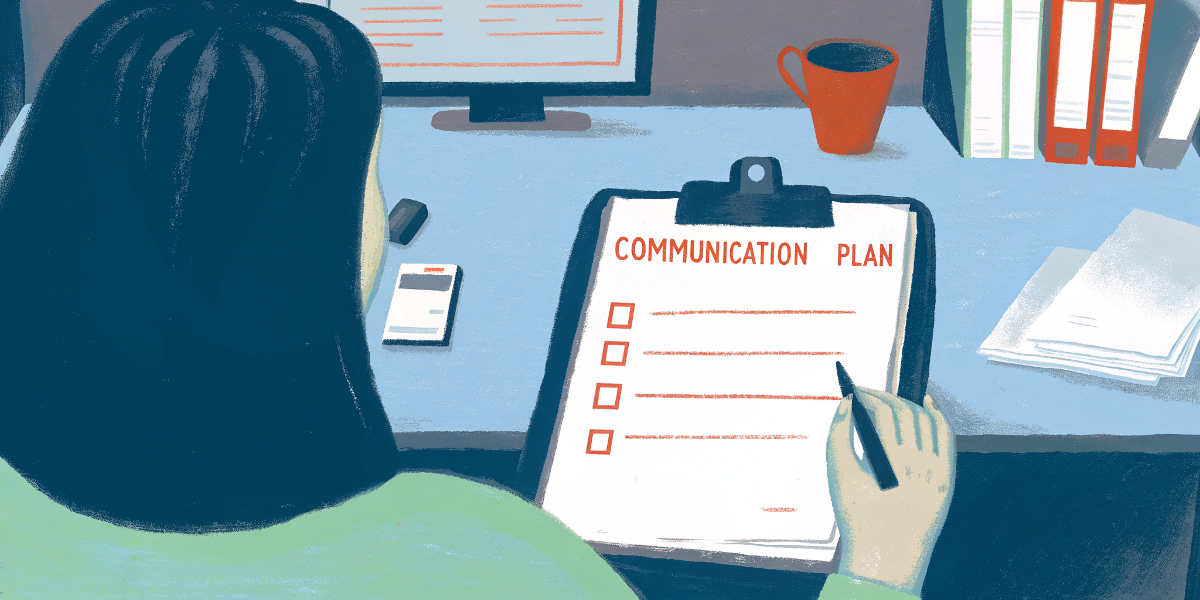
Effective communication plans are critical to any business. You need to describe your specific business messages and who should say them across business situations. This can help ensure your staff and stakeholders take your desired action. The result is that you reach your communication goals.
The thing is, certain business situations crop up more than once. So, if you write about what should be said every time your firm has a marketing campaign, you might have to write three long reports in a single month or four or five, depending on the campaigns you run during that period. This is where having a well-organized communication plan template comes into play, enabling you to streamline your approach to repetitive scenarios.
Writing about the same things all over again is time-consuming. It can take your attention away from other, more important business activities. A comprehensive communication strategy template can significantly reduce this burden by offering a predefined structure that can be customized for each specific situation.
That said, the question is this: Is there a way you can announce communication strategies without wasting that much time in these repetitive situations?
Yes, you can! Let me introduce you to the business communication plan template, which shows you how to structure and implement your messages efficiently, saving both time and effort.
What is a communication plan template?
A communication plan template is a pre-written document that outlines your business messages across different situations. They say who is responsible for each communication task in the overall communication strategy.
When you have a template ready, you can disseminate your strategy to your staff or other stakeholders quickly and effectively. After all, all you need to do is fill out the variables and hit send.
You shouldn’t, of course, just get any kind of template. Good business templates for communication plans should help you get your message across. Whether you send your template via team communication tools or offline, after reading it, everyone involved should know exactly what to do to achieve communication goals.
But where do you get these templates?
The good news is, reliable communication plan templates are readily available — and I’ll share some of the most effective ones with you shortly. But before we get into that, let’s take a step back and look at why these templates matter so much in the first place.
Why communication plans can fail and how templates prevent that
The truth is, not every communication plan works the way we hope it will. Some end up causing more confusion than clarity. Messages might be delayed, sent to the wrong people, or even misunderstood altogether. That’s usually because the planning stage was rushed, or the structure was unclear.
Here’s where a solid communication plan template makes a real difference.
With a reliable template, you reduce the chances of missing important steps. You’re less likely to forget who’s supposed to say what, or when. The right template ensures consistency, especially when messages are going out to different audiences. It also keeps your teams on the same page, since everyone follows the same format and expectations.
In other words, templates don’t just make things easier — they make things smarter. They help you avoid the typical pitfalls that slow down communication or muddle your message. And when you’re communicating in a business context, clarity and speed are everything.
6 Communication plan templates for businesses
From communicating changes in management to announcing exciting new product launches, here are six message templates you can use for your different business communication goals.
1. Change in the management communication plan template
You need to announce any management change in a business or a project. After all, if employees don’t know to whom they should report, any existing workflow can be disrupted.
A change in management communication plan should detail the information that you will communicate to stakeholders and employees. The main message, of course, is the change in management. The tone of your message, however, may vary across your different target audiences.
For instance, you might need to be more reassuring when announcing the development to the rank-and-file employees. When doing the same with upper management, you might have to sound firm.
The purpose of the communication plan is to help everyone involved in the dissemination of the message understand their respective roles. Effective communication of the details of the handover, in turn, will help convince people about the benefits of the change.
Here’s an excellent template for change management communications.
The template specifies the different stakeholders, the communication methods, the frequency, and the responsible parties for the communication task. It also has room for notes. The more specific your communication strategy, the more effectively the change in management will be communicated.
2. Marketing communication plan template
A communication plan is critical when you’re running marketing campaigns. After all, at the core of effective marketing is effective communication. You need to know how to communicate with your various audience segments so you can drive them to action.
But your potential customers aren’t the only people you need to speak to when it comes to your marketing efforts. Your plan (and template) should include how you should address media partners, too, especially if you’re holding events you’d like to have covered.
Check out the marketing communication plan template below.
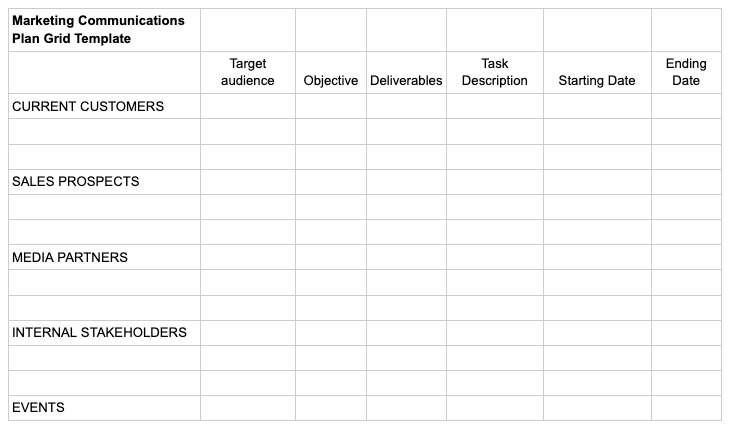
The key to creating a good communication plan is to look at your marketing campaign holistically. This way, you can determine the types of audiences that require different communication approaches.
The platforms used for disseminating your messages should be specified, too. For instance, when talking to event coordinators for a marketing event, your preferred platform could be email or secure messaging app. When talking to your current customers, your preferred platforms could be social media, email, and your website.
If you’re planning to use marketing automation tools for your marketing campaigns, list them in your plan as well.
3. Product launch communication plan template
Launching a new product is exciting. A good product is half of the success equation. The other half requires a team working together to ensure proper communication of the product launch. After all, if you don’t get to communicate your launch, you can’t expect to generate sales, at least not as immediately as you would have wanted.
This is where you need a product launch communication plan.
Your template should have fields for the different product launch messages you’ll disseminate. For instance, you might decide to send a product feature kit to your customers. As for the media, you might decide to send them a press release instead. You’d need to specify the content of each of these product launch messages in your template.
You’ll need to include other specifics, too. For instance, will you use a custom sales email template as part of your email series to subscribers? What tone will you use in your product launch messages to each of your stakeholders?
Here is a product launch communication plan template that you can edit:
PRODUCT LAUNCH COMMUNICATION PLAN
OBJECTIVES
1.
2.
TARGET MARKET
1.
2.
MESSAGING MATRIX
| Media channel | Message | Target market |
TEAM MEMBERS
1.
2.
3.
You can customize the template so that it matches your brand colors, just for branding purposes. Then share the document with your marketing and sales teams through email, if you gave them communication tasks as well.
You can just reuse the template for your next product launch.
4. Project management communication plan template
If you think about it, the plans and templates we talked about in previous sections (the marketing communication plan and template, for instance) are also project management communication plans.
There are, however, other projects that aren’t covered by the templates we’ve so far discussed. So, we’ll discuss the project management communication plan in this section separately.
In general, a project manager should be clear about what their team needs to do when working together on a project. It’s their job to make sure everything is taken care of correctly and on time. The thing is, your team members might not be the only people you need to talk to for a successful project implementation.
If you’re designing a website for a client, for instance, you’d have to coordinate with the freelance web designer and that client at different stages of the project. If you plan to set up your own store but don’t know how to start a business, you’d have to talk to even more people. You’d need to ask a lawyer about permits, consult a business coach on the best strategies, and then later on ask a recruiter to help you hire the best talent.
This is where a project management communication plan comes in. The plan can help you organize your communication tasks that are relevant to the overall project’s success.
If you’re not the only one coordinating with different project stakeholders, the plan can help your team members be on the same page. Just share the plan with them so they’ll know their specific communication tasks.
Here’s a great project management communication plan you can use as a template or get inspiration from:
PROJECT MANAGEMENT COMMUNICATION PLAN
Job Details
Client and Brand:
Job Name and Number:
Project Summary
Communication Goals
1.
2.
3.
4.
Stakeholders’ Overview
PERSON CONTACT INFO FREQUENCY FORMAT/CHANNEL
1.
2.
3.
Just adjust the specifics and the scope of your communication plan depending on the project type. Tailor your approach to match the unique needs of the project, whether it’s a small team initiative or a large-scale enterprise project.
As with your other communication plans, you’d need to outline the communication methods and the channels you will be using to contact stakeholders. These could include in-person or video meetings, emails, phone calls, DMs, social media, digital flipping books, or any other methods.
Also, include the hows. Will you be providing weekly or biweekly status reports to the client? Will you be talking to your building material suppliers on Wednesday or Thursday? Will you use collaboration platforms for faster communication or messaging tools for real-time updates? Again, the more detailed your communication plan, the better for you.
5. Strategic communication plan template
A strategic communication plan helps you communicate your organization’s vision for the future and its goals. The plan should specify the different ways you can make everyone in the company—from the upper management to the rank-and-file employees—aware of these. The goal of communicating these goals is to motivate everyone to take action so that the company can achieve them.
What are some sample business goals? For instance, you might want to improve your brand’s reputation in X months. Or you might want to enhance partnerships with other organizations.
Because business goals, the order in which these should be achieved, and the employees in a company tasked with communication roles change, you need a communication plan template in this situation, too.
A good strategic communication plan template leaves room for the specific goals of the business. It also allows you to easily change each person’s communication responsibilities.
STRATEGIC COMMUNICATION PLAN
Initiative/Goal:
Communication Objectives:
1.
2.
3.
4.
Audience:
1.
2.
3.
4.
Key Messages:
1.
2.
3.
4.
The template should also allow you to specify a timeline for the company-wide dissemination of the business goals. Don’t just give a general timeline. Everyone involved in the dissemination process should have a deadline to meet. For instance, you can say in your plan that X should have spoken to the senior managers by May. Y, meanwhile, should have informed the rank-and-file employees by August.
That’s the only way you can ensure the seamless dissemination of business objectives across the company.
Above is a strategic communication plan template that you can adjust for your use.
6. Internal communication plan template
An internal communication plan ensures your stakeholders, including your team, are up-to-date on what’s going on in the company.
The change management communication plan we discussed above is, in fact, a type of internal communication plan. There are, however, other internal communication plans worth discussing.
For instance, you’d use an internal communication plan to communicate new onboarding strategies or workplace arrangements (i.e., a new arrangement that sees half of the workforce working remotely and the other half on-site).
In the first case, a good communication plan template should allow you to specify what tools to use to onboard new employees. It should also allow you to explain the platforms you’ll use to disseminate your corporate values and policies to the new hires. You should be able to specify the messages you’ll give, too.
Meanwhile, a communication plan template for new workplace arrangements should allow you to specify the team collaboration tools to use. An internal communication plan template will help you with everything you need to keep your team on track.
This template will work great as a starting point for your communication outreach within your organization. It’s free and you can print it for use.
INTERNAL COMMUNICATION PLAN
OBJECTIVES AND GOALS
| 1. |
| 2. |
| 3. |
AUDIENCE
| NAME | OFFICE | POSITION |
| 1. | ||
| 2. | ||
| 3. |
MESSAGES PER STAKEHOLDER
| 1. |
| 2. |
| 3. |
The template is quite self-explanatory. First, you’d need to decide what details to share with the stakeholders. Those stakeholders are essentially the people in your company who need to know about those new internal arrangements or policies.
So, the stakeholders in our new workplace arrangement example would be practically everyone in the company. However, your messages would be different for different stakeholders. You’d tell half the workforce to report on-site and the other half to report online.
You’d also have to include in your communication plan template the new policies you’ll communicate to the remote workforce (for instance, what time they should be online, how they should respond to co-workers’ messages, etc.).
How can a communication plan help you?
Communication plans can help you disseminate the correct information effectively to appropriate stakeholders. They ensure that everyone is aligned with your objectives and reduce the risk of miscommunication. Business templates for communication plans, meanwhile, help you create these plans. So, instead of writing them from scratch every time a situation crops up, you just have to fill in the important variables to ensure effective communication of goals.
You saw examples of business templates for communication matrix for different scenarios: a change in management, marketing, product launch, project management, strategic, and other internal changes. These templates are specifically designed to cover a wide range of business needs, ensuring you’re prepared for any situation.
Use the templates to your advantage or take inspiration from them. See how they can help you get the right messages to the right people. The other good news? You didn’t have to spend too much time writing, making it easier to focus on other critical aspects of your business communication.
-

 Collaboration5 months ago
Collaboration5 months ago18 Experts Share Tips for Businesses Switching to Remote Work
-
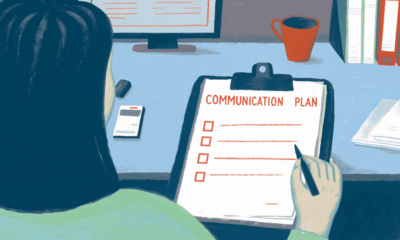
 Communication8 months ago
Communication8 months ago6 Communication Plan Templates With Examples
-

 Collaboration6 months ago
Collaboration6 months ago30 Work From Home Memes: Funny Work Memes to Make You Laugh
-
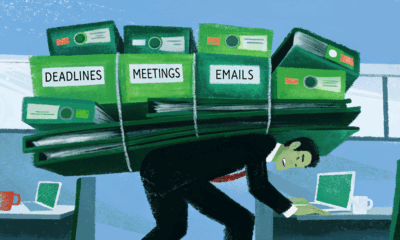
 Collaboration8 months ago
Collaboration8 months ago6 Tips for Lifting the Burden of Too Many Responsibilities
-

 Productivity7 months ago
Productivity7 months agoSuper True Mental Health Memes You’ll Probably Relate To
-

 Collaboration8 months ago
Collaboration8 months ago35+ Collaboration Quotes to Celebrate Teamwork
-

 Collaboration8 months ago
Collaboration8 months ago7 Easy Strategies for Effective Team Communication
-
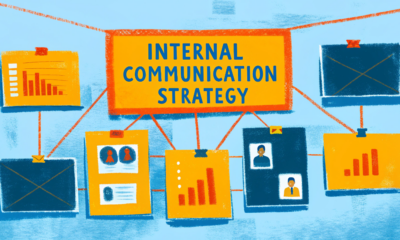
 Collaboration8 months ago
Collaboration8 months agoThe Definitive Guide to Creating an Internal Communication Strategy




